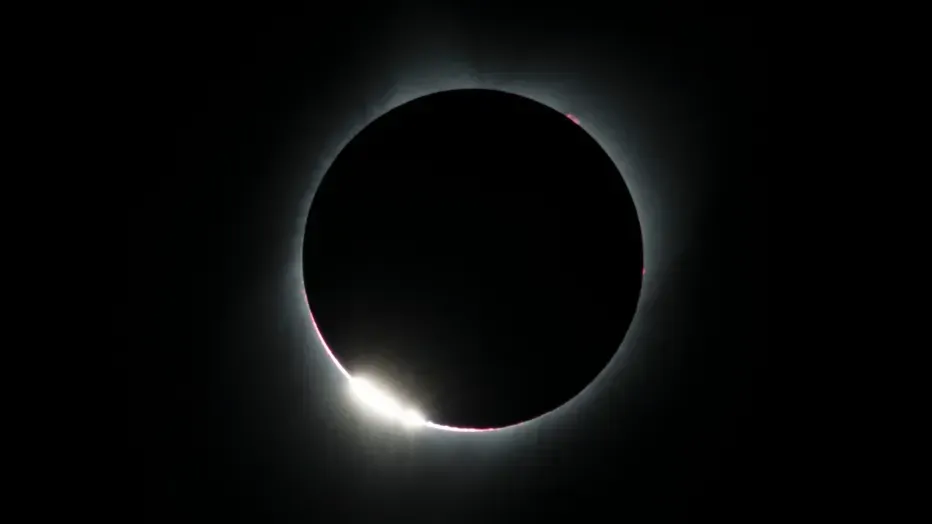Why a diamond ring effect in a Solar Eclipse? Ask me! Ask me!
Blog vol 4.50. Why a diamond ring effect in a Solar Eclipse? Ask me! Ask me!
The eclipse was truly awesome. The best part is that we went out our front door and there it was. In our location, Burlington, Ontario the moon started shading around 2:45 and went totality at around 3:20. We watched the whole thing.
1. The overall light got gradually dimmer as the shadow increased, weirdly so, not like evening. For us in Burlington, thankfully, the clouds cleared just in time for the eclipse!
2. As we got closer to totality, we looked for shadow bands, where finer and finer “waves” of light and dark increase in intensity up to totality. Could not see them, but my family at home in Jerseyville, out in the country, did pick them up on the gravel driveway.
3. We watched for Baily’s beads and any diamond ring effect as the corona developed, but no such event on the left side of the moon.
4. Totality. Cannot see the sun with the solar eclipse glasses, so off they go, and voila. Was not total blackness, one likely reason is we had our street lights come on and our overhead sign. The horizon looked like it was on the verge of dusk and it was 360 degrees around. Again, really cool.
5. Speaking of cool, the change in temperature was palpable.
6. Coming out of totality, then we saw it, the diamond ring, at around 2:30, right on the edge, and did it shine. Beautiful.
7. Someone turned on the lights, and we put our eclipse glasses on again to catch the moon’s shadow now finishing its pass.
The shadow bands are not always visible. With snow or concrete on the ground and with less general light, these bands can be seen more readily. However, some people online who have seen multiple eclipses have never seen the bands or only seen them once. My family had never heard of shadow bands but observed the rippling light on either side of totality and thought it was odd. They did not realize how fortunate they were, a little jealous, honestly.
Several theories on what happens here: one is diffraction slits as the light from the corona reaches us, but more likely it is the “twinkling” effect we get when looking at stars, the light, coming from a finer light source, is altered by the earth’s atmosphere as it reaches us. (Read more here)
In light of all this (no pun intended;), I saw some very interesting things the other night when I got out an 11-inch Celestron reflecting telescope (a really good friend of mine lent it to me) to take a look at the moon. A clear night and 500 X power allowed me to see details on the moon that I did not think possible. I saw a huge “canyon” on the edge of the moon at 10:30 (reversed with Star diagonal, so really at 3:30). The first light that peaked out of the corona during the eclipse was right there, giving us the diamond we saw. The crevice was so huge, it left no doubt that this was our diamond maker. I also found out that the face of the moon rotates on us through the year, always the same side facing us just positioned differently, so full moons look different over a calendar year, did not know this. As a result, the diamond will be in different positions in different eclipses. Breath-taking.
Stay tuned for more astronomy topics as I get into the world of astrophotography, the good people at Nikon, are going to help me make this possible. Now that I am inspired, watch out.
Til next week,
The good doctor







